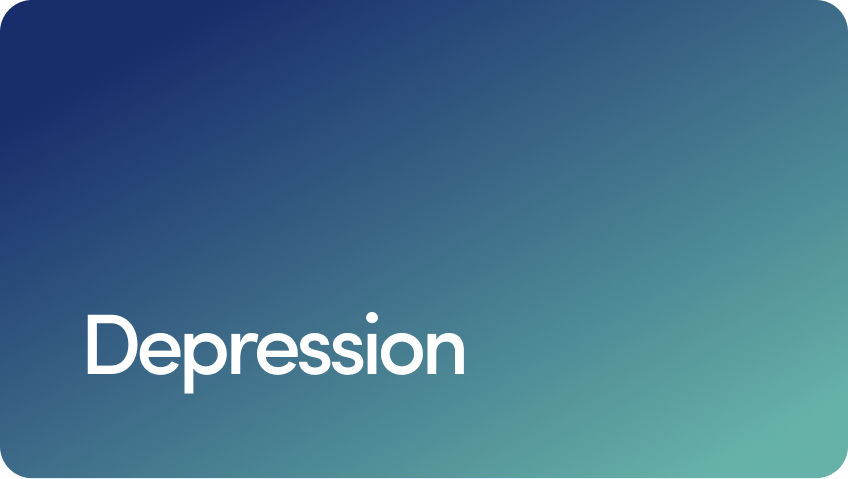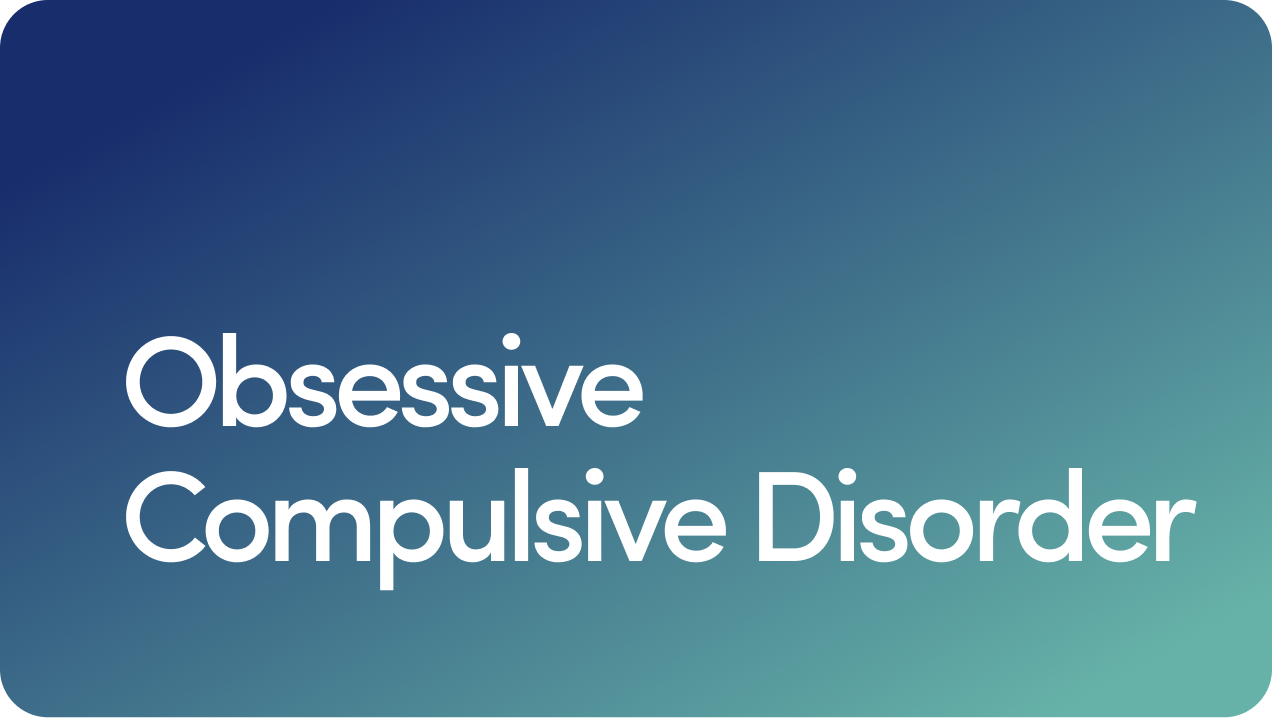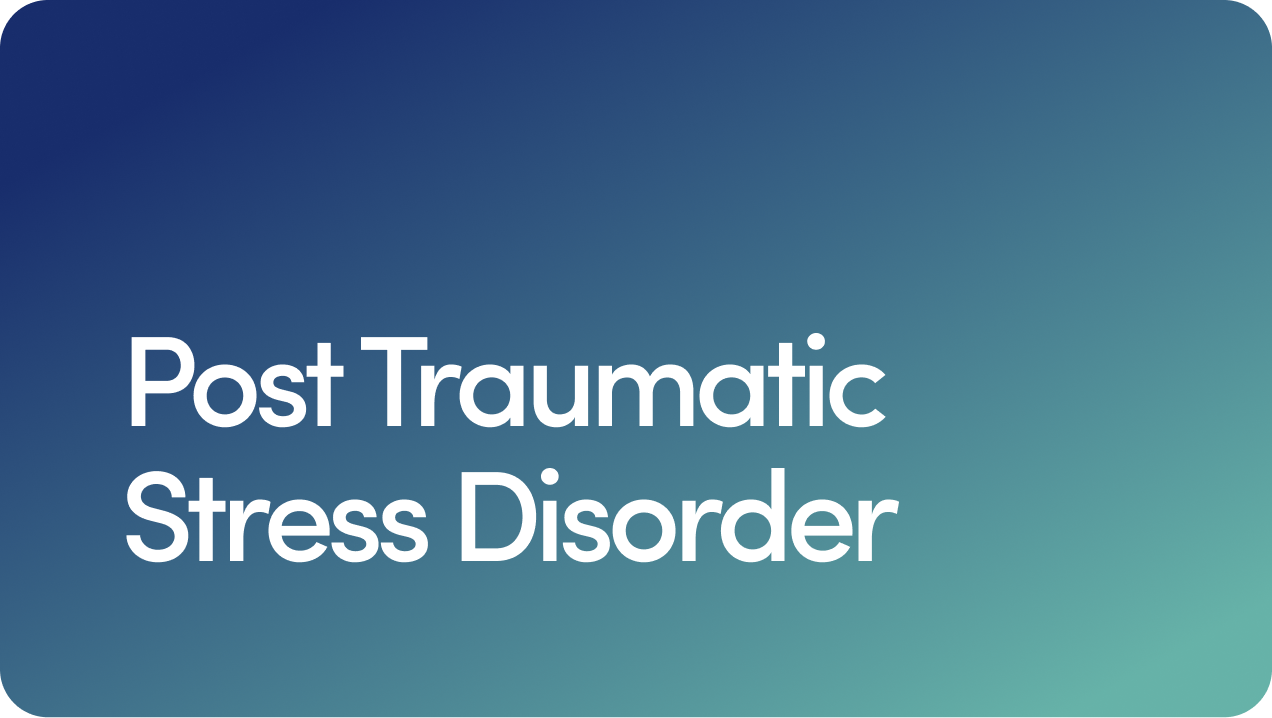Content
Free Mental Health Assessment
Prozac For PMDD: Does it Work?

Reviewed by Daniel Z. Lieberman, MD
Written by Hadley Mendelsohn
Published 07/11/2022
Updated 08/24/2024
If you’re struggling with a depressed mood or have been diagnosed with panic disorder or anxiety disorder, there’s a good chance you’ve heard of Prozac®.
Prozac is one of the most widely prescribed medications in the U.S., with tens of millions of prescriptions written every year. But it isn’t just for treating depression or panic disorder — some use Prozac for PMDD.
PMDD stands for premenstrual dysphoric disorder, a combination of emotional and physical symptoms more intense and debilitating than typical menstrual cycle symptoms.
Premenstrual symptoms are a common problem for women. Up to 90 percent of women of reproductive age experience discomfort before and during their periods. Those with PMDD may find it difficult to function in their daily lives.
But does Prozac for PMDD work? We’ll delve into everything you need to know about using Prozac in the treatment of premenstrual dysphoric disorder.
Content
What Is Prozac?
Before we get into Prozac for PMDD specifically, let’s go over the basics of this medication.
A brand name for the generic medication fluoxetine, Prozac is one of the most commonly prescribed drugs to treat major depressive disorder (MDD). Prozac may also be used to treat:
Dysthymia (aka persistent depressive disorder or PDD)
Panic disorder
Obsessive-compulsive disorder (OCD)
Post-traumatic stress disorder (PTSD)
Bulimia
Premenstrual dysphoric disorder (PMDD)
Prozac belongs to a class of drugs called selective serotonin reuptake inhibitors (SSRIs). SSRIs prevent the reabsorption of the neurotransmitter serotonin, meaning it remains active longer in your brain.
Sometimes called the “happy hormone,” serotonin can contribute to feelings of well-being. Prozac’s modification of serotonin activity may help improve mood and treat symptoms of depression, panic disorder, and other mental health conditions.
Prozac Side Effects
As is the case with any medication, Prozac can cause a range of side effects, including:
Headache
Dry mouth
Nausea, indigestion, or diarrhea
Feeling nervous or restless
Increased sweating
Fatigue or frequent yawning
Having trouble sleeping (or insomnia)
Decreased libido (lowered sex drive)
These common side effects tend to be mild and most of them improve or go away completely within the first few weeks of starting the medication.
Taking Prozac can lead to more serious effects, although these are rare. These adverse effects include low sodium blood levels, teeth grinding, serotonin syndrome, and seizures.
The use of Prozac is also rarely associated with an increased risk of suicidal thoughts or behavior, especially in individuals with a history of such thoughts related to depression or mood disorders. If you’re concerned about the common side effects or the more severe (albeit rare) effects, talk to your healthcare provider before taking Prozac for PMDD or any other condition.
Prozac Dosages
Prozac dosage will vary based on what your healthcare provider believes is the proper treatment for your symptoms.
Typically, medical professionals prescribe an initial dosage of around 20 milligrams (mg) daily, with a maximum of 80 milligrams daily.
You can learn more about Prozac dosages and how the medication works in our complete guide to fluoxetine.
What Is PMDD?
Premenstrual dysphoric disorder is a more severe, oftentimes debilitating form of premenstrual syndrome (more commonly known as PMS). PMDD can affect up to eight percent of women of childbearing age, generally between the ages of 16 and 49 years old.
Symptoms of PMDD
PMDD is characterized by emotional and physical symptoms that start the week before your period, typically within seven to 10 days. But they can persist into the days you begin bleeding.
Emotional symptoms of PMDD include:
Nervousness, agitation, or paranoia
Feeling out of control
Anger or general moodiness
Forgetfulness
Loss of interest in activities
Sadness
Thoughts of suicide
The physical symptoms of PMDD may include:
Acne
Bloating
Back pain
Breast tenderness or swelling
Dizziness
Cramps
Gastrointestinal issues like nausea, vomiting, or constipation
Headache
Heart palpitations
Appetite changes
Joint pain
Reduced sex drive
Painful periods
While both the emotional and physical symptoms of PMDD may be similar to those of PMS or your period, it’s important to note that the symptoms of PMDD are much more severe and debilitating. These symptoms can affect your ability to perform at work and function in daily life.
PMDD can also cause severe anxiety, mood changes, and depression. Some people may experience more emotional symptoms than physical symptoms, or vice versa.
What Causes PMDD?
Although PMDD can be a severe and long-lasting condition, its exact cause remains unknown. Research shows that you may be more prone to PMDD depending on your blood type, age of menarche, caffeine intake, and if you have moderate or more severe depression.
Other research suggests that people with PMDD might be more sensitive to the hormones released during a typical menstrual cycle.
During a regular menstrual cycle, the ovaries produce and regulate the hormones estrogen and progesterone, causing them to rise and fall.
These fluctuations in hormones are thought to cause PMDD because they interact with certain brain chemicals and can affect mood. Specifically, estrogen and progesterone interact with the neurotransmitters dopamine and serotonin — the “feel-good” chemicals that play a role in mood and mood disorders.
PMDD in Your Monthly Cycle
PMDD symptoms start during the luteal phase — between ovulation (the ovary releasing a mature egg) and the first day of bleeding. If you aren’t pregnant, decreasing levels of estrogen and progesterone may trigger symptoms of PMS.
At ovulation, the ovaries start to increase progesterone. The hormone is then converted into allopregnanolone (ALLO), which continues to rise along with progesterone until your period starts — at which point both hormones rapidly drop.
ALLO interacts with GABA (gamma-aminobutyric acid) receptors in parts of the brain that control anxiety, agitation, and irritability. Women with PMDD appear to be more sensitive to ALLO.
After ovulation, estrogen levels drop. Estrogen interacts with several brain chemicals, particularly serotonin, that can affect mood and aspects of behavior.
Serotonin regulates mood, sleep, and appetite, as well as how you process and perceive information. Women with PMDD have clinically shown to have low moods, crave specific foods, and show impaired cognitive performance during their luteal phase — which could be a sign of an exaggerated drop in serotonin.
Women with PMDD almost always have normal hormone levels, indicating that this condition isn’t necessarily caused by a hormonal imbalance — just that maybe they’re more sensitive to the shifts.
Researchers at the National Institutes of Health discovered that genetic changes in people with PMDD make their cells overreact to estrogen and progesterone, which could be responsible for PMDD symptoms.
Diagnosing PMDD
Your healthcare provider will consider a PMDD diagnosis if you experience at least five of the following symptoms, starting seven to ten days before your period:
Depressed mood
Marked irritability or anger
Anxiety or tension
Reduced interest in friends, work, and other activities
Fatigue or lack of energy
Trouble concentrating
Sleeping too much or having trouble sleeping
Appetite changes
Feeling out of control
Physical symptoms like bloating, breast tenderness, joint or muscle pain, and headache
Diagnosing premenstrual dysphoric disorder is more likely after completing at least two menstrual cycles to better track PMDD symptoms. Your provider will also want to rule out other potential medical conditions that could be causing similar symptoms.
Can You Take Prozac for PMDD?
Yes. Because of the connection between serotonin and PMDD symptoms, SSRIs are the top medication prescribed to treat premenstrual dysphoric disorder.
Reviews of randomized clinical trials showed that antidepressants that slow down the reuptake of serotonin were effective in treating PMDD in both long-term use and use only during the luteal phase of the menstrual cycle.
Fluoxetine for PMDD is especially effective. One clinical trial found that a daily dose of 20 milligrams of fluoxetine throughout two menstrual cycles efficiently reduced tension, irritability, unease, and dissatisfaction.
Currently, fluoxetine is one of three SSRIs approved by the U.S. Food and Drug Administration (FDA) to treat PMDD.
If you suffer from physical or emotional symptoms and fit the criteria for diagnosis, a healthcare professional may prescribe Prozac for PMDD.
Dosing Prozac for PMDD
Studies have found that low doses of 10 milligrams a day of generic fluoxetine or Prozac for PMDD alleviate the symptoms quicker than those dosages for depression. In other words, women may not have to take it every day like they would for treating depression.
The dosage amount and frequency will vary by each person and their unique symptoms and diagnosis.
Although researchers haven’t gathered sufficient data to determine how long Prozac for PMDD needs to be used, preliminary studies of fluoxetine suggest treatment is usually continuous. But it can be taken as needed.
Who Shouldn’t Take Prozac for PMDD
You may not be prescribed Prozac for PMDD if you:
Are allergic to fluoxetine
Have suicidal thoughts or behaviors after starting the medication
Have taken an MAOI in the past 14 days
Have diabetes
Already take it to treat bipolar disorder, depression, or anxiety on its own
Monoamine oxidase inhibitors (MAOIs), another type of depression medication — including phenelzine, isocarboxazid, tranylcypromine, and others — interact negatively with Prozac. You shouldn’t take Prozac if you’ve taken an MAOI in the last two weeks.
Other Treatments for PMDD
While SSRIs like Prozac are often the top treatment for PMDD, there are other treatment options.
Alternatives to Prozac for PMDD include:
Hormonal treatments
Antidepressants
Lifestyle changes
Psychotherapy
Here’s what to know.
Hormonal Treatments
PMDD symptoms typically begin at ovulation. Hormonal medications like birth control prevent ovulation from happening and may help stop PMDD symptoms.
Some hormonal medications include:
Oral contraceptives. Hormonal birth control pills can help reduce PMDD symptoms for some, but they can worsen symptoms for others. Birth control pills containing drospirenone are approved by the FDA for PMDD treatment, but healthcare professionals can prescribe other birth control pills off-label for this purpose.
Gonadotropin-releasing hormone (GnRH) agonists. GnRH agonists like leuprolide stop the ovaries from producing estrogen and progesterone. While this can be a huge help for PMDD symptoms, it also temporarily puts you into menopause, which can cause PMDD-like symptoms, including anxiety, depression, and trouble concentrating.
Antidepressants
Prozac isn’t the only depression and anxiety medication that can treat PMDD.
Other SSRIs and antidepressants that may be prescribed include:
Citalopram (Celexa®)
Escitalopram (Lexapro®)
Paroxetine (Paxil®, Pexeva®)
Sertraline (Zoloft®)
Duloxetine (Cymbalta®)
Fluoxetine (Prozac, Sarafem®)
While other antidepressants are also effective, not as much research has been done to say anything definitively about how well they’ll work for PMDD.
You can do a virtual evaluation with Hers online services to figure out if medication is the right treatment option for you.
Lifestyle Changes
Making a few adjustments to everyday life can have positive impacts for some. Here are a few things you can try:
Exercising. Getting aerobic exercise every day, such as walking, running, swimming, or biking, can improve mood and energy levels.
Eating a healthy diet. Focus on nutritious foods (think lean proteins, whole grain carbs, and fruits and vegetables).
Relieving stress. It’s easier said than done. But keeping your stress levels in check is always good for your health. Besides exercise, mindfulness meditation and relaxation techniques can help manage stress levels.
Taking supplements. Certain supplements — including vitamin B6, calcium, and magnesium — and herbal remedies have shown to be beneficial for people with PMDD.
Psychotherapy
Talking with a therapist could help you manage the emotional challenges that come with PMDD.
Cognitive behavioral therapy (CBT), for instance, is about developing new behaviors and thought patterns. Research has also shown that CBT helps with the long-term treatment of PMDD and its symptoms.
Prozac for PMDD: Final Words
If you’ve been struggling with an anxiety disorder, panic disorder, bipolar disorder, or the symptoms of depression, your healthcare provider may prescribe Prozac. They also might think you’re a good candidate for Prozac if you’re dealing with multiple symptoms of PMDD.
Here’s what to remember about PMDD and treating it with Prozac:
PMDD is generally described as more severe and debilitating premenstrual symptoms.
Symptoms of PMDD can include mood swings, depressed mood, anxiety, feeling hopeless, and physical symptoms, such as headache, bloating, or muscle pain.
SSRIs like Prozac are typically used to treat PMDD, possibly in conjunction with lifestyle changes and therapy. Your healthcare provider should decide on the dosing regimen.
Living with PMDD can be overwhelming and significantly impact your everyday life. And while there’s no single best treatment for PMDD, a combination of approaches can help you manage the symptoms.
If you feel ready to take the next step and want to explore available medications, do a virtual assessment on our online platform.
18 Sources
- Barth CL, et al. (2015). Sex hormones affect neurotransmitters and shape the adult female brain during hormonal transition periods. https://www.frontiersin.org/articles/10.3389/fnins.2015.00037/full
- Clark KE, et al. (2021). PMS and PMDD: overview and current treatment approaches. https://www.uspharmacist.com/article/pms-and-pmdd-overview-and-current-treatment-approaches
- Dubey N, et al. (2017). Sex hormone-sensitive gene complex linked to premenstrual mood disorder. https://www.nih.gov/news-events/news-releases/sex-hormone-sensitive-gene-complex-linked-premenstrual-mood-disorder
- Freeman EL, et al. (2003). Premenstrual dysphoric disorder: recognition and treatment. https://www.ncbi.nlm.nih.gov/pmc/articles/PMC353031/
- Hantsoo LI, et al. (2015). Premenstrual dysphoric disorder: epidemiology and treatment. https://www.ncbi.nlm.nih.gov/pmc/articles/PMC4890701/
- Kaewrudee SR, et al. (2018). Vitamin or mineral supplements for premenstrual syndrome. https://www.ncbi.nlm.nih.gov/pmc/articles/PMC6491313/
- Lete IN, et al. (2016). Contraceptive options for women with premenstrual dysphoric disorder: current insights and a narrative review. https://www.ncbi.nlm.nih.gov/pmc/articles/PMC5683150/
- Mahindru AD, et al. (2023). Role of physical activity on mental health and well-being: a review. https://www.ncbi.nlm.nih.gov/pmc/articles/PMC9902068/
- MGH Center for Women’s Mental Health. (2020). Essential reads: ovarian suppression for the treatment of severe PMDD. https://womensmentalhealth.org/posts/essential-reads-ovarian-suppression-for-the-treatment-of-severe-pmdd/
- Mishra SA, et al. (2023). Premenstrual dysphoric disorder. https://www.ncbi.nlm.nih.gov/books/NBK532307/
- Naguy AH, et al. (2022). Psychopharmacotherapy of Premenstrual dysphoric disorder—new vistas. https://www.ncbi.nlm.nih.gov/pmc/articles/PMC9235312/
- National Alliance on Mental Illness (NAMI). (2024). Fluoxetine (Prozac). https://www.nami.org/About-Mental-Illness/Treatments/Mental-Health-Medications/Types-of-Medication/Fluoxetine-(Prozac)
- Ngo VY, et al. (2023). Associated factors with premenstrual syndrome and premenstrual dysphoric disorder among female medical students: A cross-sectional study. https://www.ncbi.nlm.nih.gov/pmc/articles/PMC9879477/
- PROZAC (fluoxetine capsules) for oral use. (1987). https://www.accessdata.fda.gov/drugsatfda_docs/label/2017/018936s108lbl.pdf
- Steiner M, et al. (1995). Fluoxetine in the treatment of premenstrual dysphoria. Canadian fluoxetine/premenstrual dysphoria collaborative study group. https://pubmed.ncbi.nlm.nih.gov/7739706/
- Stenchever MA. (1993). Risks of oral contraceptive use in women over 35. https://pubmed.ncbi.nlm.nih.gov/8120860/
- Weise CO, et al. (2019). Internet-based cognitive-behavioural intervention for women with premenstrual dysphoric disorder: a randomized controlled trial. https://pubmed.ncbi.nlm.nih.gov/30783069/
- U.S. Food & Drug Administration (FDA). (2019). Information about drospirenone FDA. https://www.fda.gov/drugs/postmarket-drug-safety-information-patients-and-providers/information-about-drospirenone
Editorial Standards
Hims & Hers has strict sourcing guidelines to ensure our content is accurate and current. We rely on peer-reviewed studies, academic research institutions, and medical associations. We strive to use primary sources and refrain from using tertiary references. See a mistake? Let us know at [email protected]!
This article is for informational purposes only and does not constitute medical advice. The information contained herein is not a substitute for and should never be relied upon for professional medical advice. Always talk to your doctor about the risks and benefits of any treatment. Learn more about our editorial standards here.
Daniel Z. Lieberman, MD
Education
Doctor of Medicine - New York University Grossman School of Medicine, 1992
Bachelor of Arts - St. John’s College, 1985
Training
Internship & Residency - New York University Grossman School of Medicine, 1996
Medical Licenses
District of Columbia, 1996
Maryland, 2022
Virginia, 2022
Board Certifications
American Board of Psychiatry and Neurology, Psychiatry, 1997
American Board of Psychiatry and Neurology, Addiction Psychiatry, 1998
Other Certificates & Certifications
Stanford Online, AI in Healthcare Specialization Certificate, 2025
Stanford Online, Machine Learning Specialization Certificate, 2024
Affiliations & Memberships
Specialties & Areas of Focus
Mental Health
Years of Experience
33
Previous Work Experience
Professor and Vice Chair - Department of Psychiatry and Behavioral Sciences, George Washington University, 1996–2022
Publications & Research
Title: A neurotransmitter approach to the trolley problem
Published in: OBM Neurobiology
Date: 2019
URL: https://www.lidsen.com/journals/neurobiology/neurobiology-03-02-030
Title: An automated internet application to help patients with bipolar disorder track social rhythm stabilization
Published in: Psychiatric Services
Date: 2011
URL: https://psychiatryonline.org/doi/10.1176/ps.62.11.pss6211_1267
Title: Enhancing adherence to mood charting with an online version of the NIMH Life Chart
Published in: Annals of General Psychiatry
Date: 2010
URL: https://annals-general-psychiatry.biomedcentral.com/articles/10.1186/1744-859X-9-S1-S11
Title: The role of gender in single versus married patients with bipolar disorder
Published in: Comprehensive Psychiatry
Date: 2010
URL: https://www.sciencedirect.com/science/article/abs/pii/S0010440X0900128X
Title: Evaluation of the stability and validity of participant samples recruited over the Internet
Published in: CyberPsychology and Behavior
Date: 2008
Title: Pathways to change: The effect of a Web application on treatment interest
Published in: The American Journal on Addictions
Date: 2008
URL: https://onlinelibrary.wiley.com/doi/10.1080/10550490802138525
Media Mentions & Features
Washington Post, Why do passengers freak out on airplanes? Science might have the answer.
Associated Press, MillerCoors Tapping Into Millenials
The Washington Post, Holiday drinking can be hard on your health, but you can take precautions
Le Figaro (France), Daniel Z. Lieberman: «La dopamine nous pousse à acheter en nous promettant le bonheur» (Daniel Z. Lieberman: “Dopamine drives us to buy by promising us happiness”)
Men’s Health (Spain), Cómo la dopamina influye en nuestro cerebro y determina nuestra vida (How dopamine influences our brain and determines our lives).
CNBC, The psychological reason it’s so hard to work today after the riot — and how to cope
Business Insider, The reason why we self-sabotage is because our brains are wired to resist the things we want most in life
U.S. News & World Report, How Your Secrets Can Damage and Maybe Even Kill You
Why I Practice Medicine
I practice medicine because I believe that mental health is the foundation of a meaningful life. When people suffer psychologically, it touches every part of their existence—from relationships to work to the simple ability to feel joy. Because it can be so difficult for people who are suffering to find good mental health care, my mission has been to expand access through technology, so that no one is left behind.
Hobbies & Interests
I like to write in my spare time. I’ve written two nonfiction titles, Spellbound: Modern Science, Ancient Magic, and the Hidden Potential of the Unconscious Mind and the international bestseller, The Molecule of More: How a Single Chemical in Your Brain Drives Love, Sex, and Creativity--and Will Determine the Fate of the Human Race
Professional Website or Profile
danielzlieberman.com
Related Conditions
 Anxiety
Anxiety
 Depression
Depression
 OCD
OCD
 PTSD
PTSD
 Bipolar Disorder
Bipolar Disorder
 Premenstrual Dysphoric Disorder
Premenstrual Dysphoric Disorder